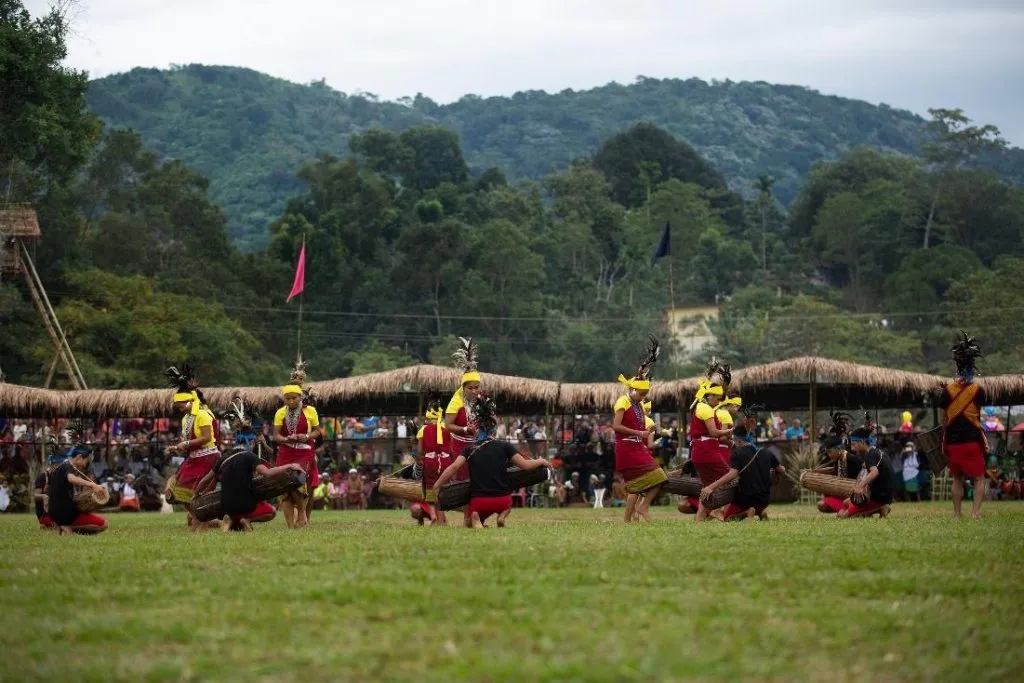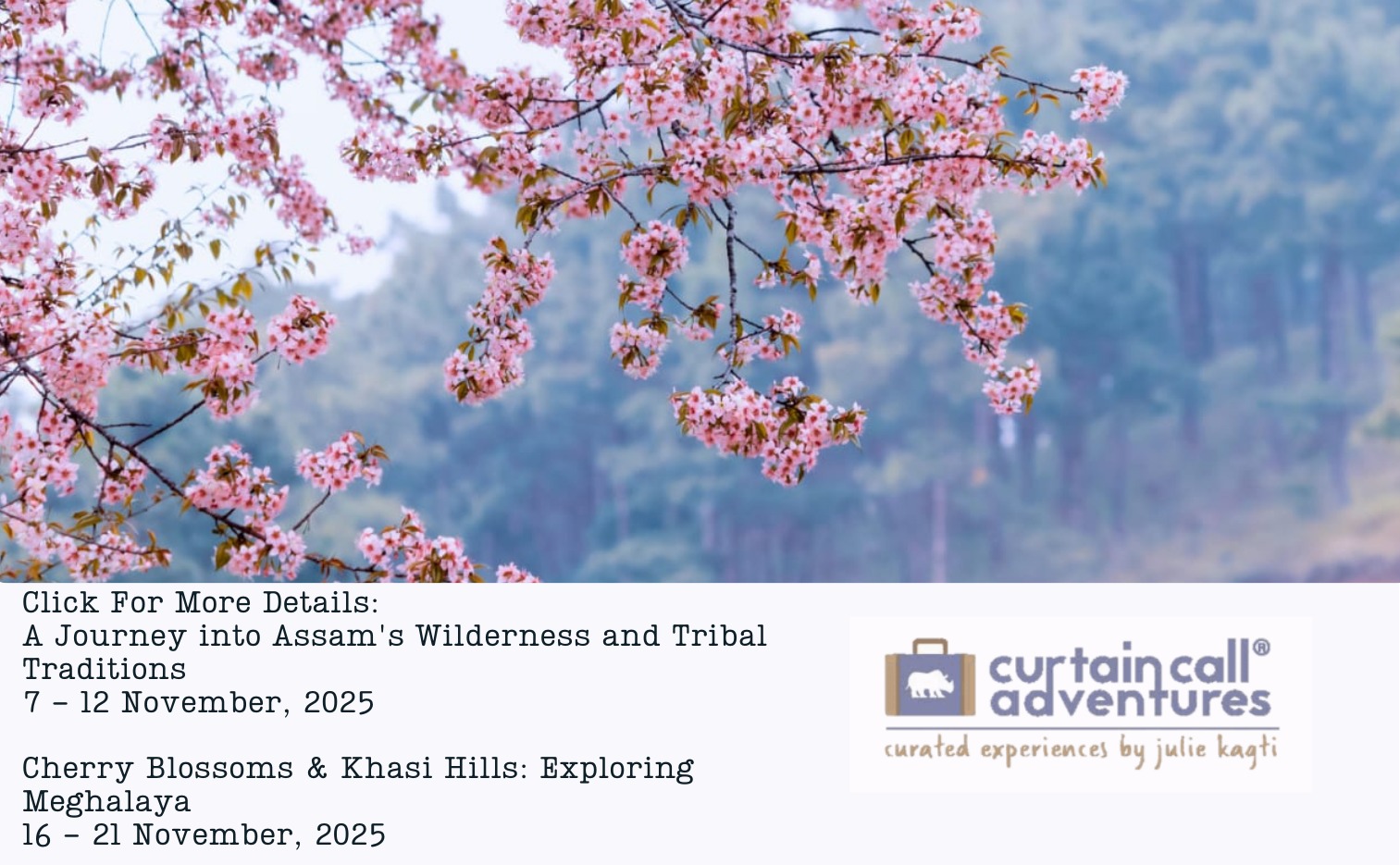The month of October heralds the festive season in India. Especially here in the North East, where vibrant festivals are not just events but living expressions of community and gratitude. Among them, one celebration stands out for its rhythm, colour, and spirit — Wangala, the Festival of a Hundred Drums.
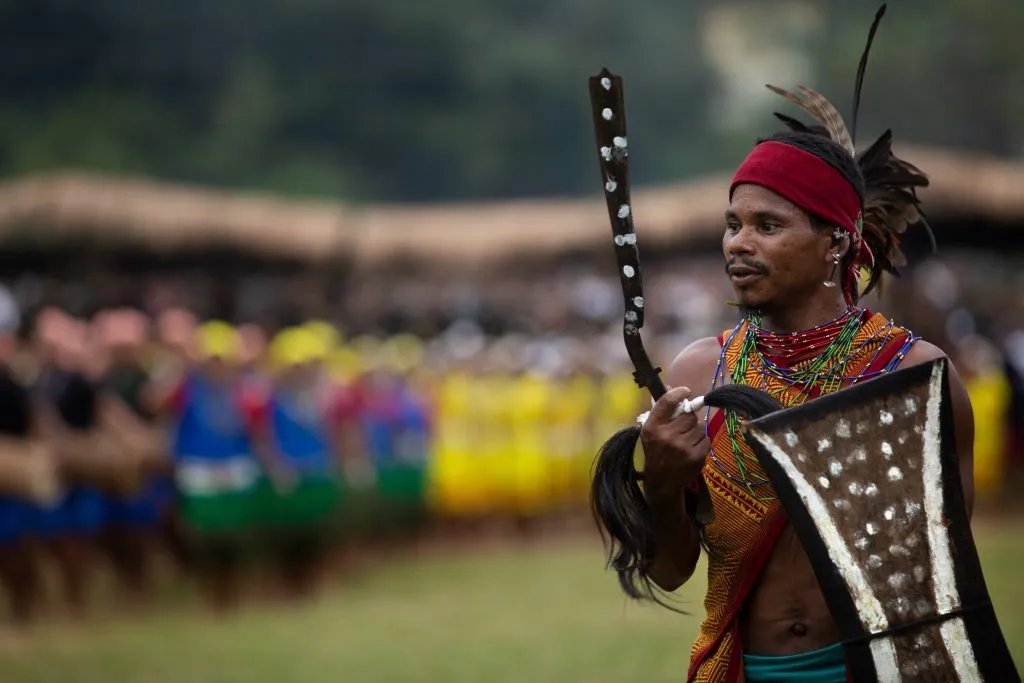
What is Wangala?
Wangala is the harvest festival of the Garo tribe, one of the many indigenous communities that call Meghalaya, Nagaland, and parts of Bangladesh home. Celebrated primarily in November, Wangala is a thanksgiving to Misi Saljong, the Sun God of fertility and prosperity — a way of offering gratitude for the year’s bounty and marking the end of the agricultural season.
Traditionally, it stretched across several days; in some villages, it still does. Each ritual, each rhythm, carries centuries of memory — an unbroken chain linking the community to the land and its cycles.
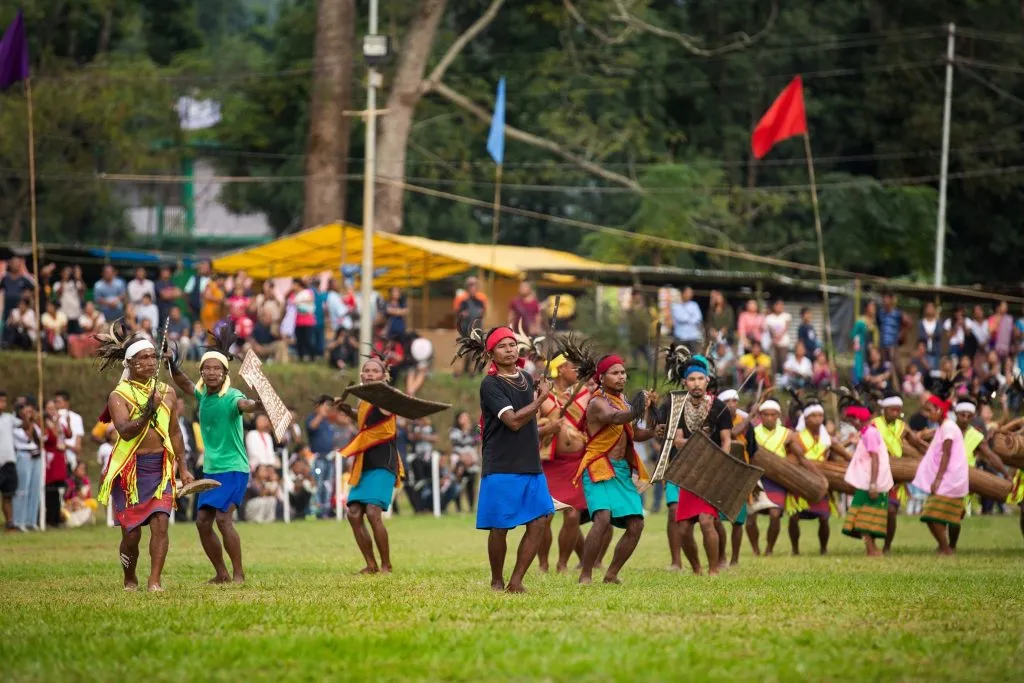
Rituals and Rhythm
The festival begins with Rugala, a quiet ceremony held in the Nokma’s (chieftain’s) home. The village priest pours freshly brewed Chubitchi (rice beer), burns fragrant Cha’chat so’a (incense), and offers rice and vegetables to the deity.
What follows is Kakkat, when the solemn ritual gives way to joyous rhythm. The soundscape shifts — the air fills with the pulse of Dama (oval-shaped drums), the echo of buffalo horn flutes, and the cadence of songs that seem to rise from the earth itself. Men and women move in parallel lines, their feet in perfect time, their energy one.
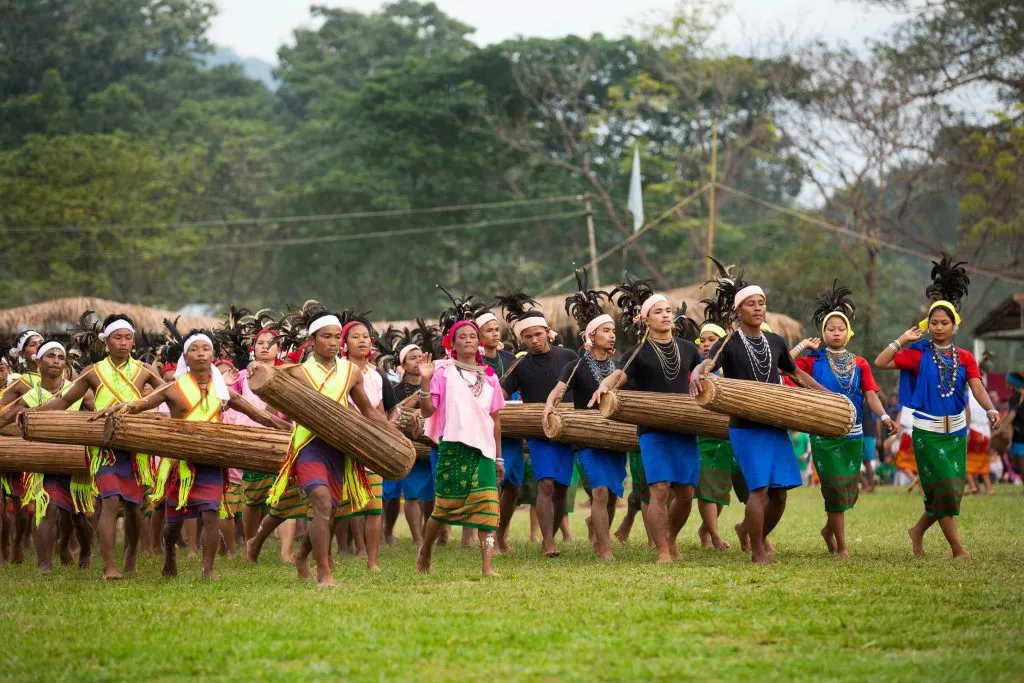
The Dance of a Hundred Drums
At the heart of the celebration is the Wangala Dance, performed to the rolling thunder of a hundred drums. The men, in feathered headgear, beat the drums in sync, while the women, adorned in vibrant handwoven Dakmanda and Daksari, move gracefully — hands raised, shoulders swaying, faces radiant.
According to Garo folklore, the dance was inspired by the movement of crabs, a reminder of how deeply nature shapes life and art here. The story feels alive as you watch the dancers’ feet mimic the rhythm of rain and soil, every beat a thank-you to the earth.
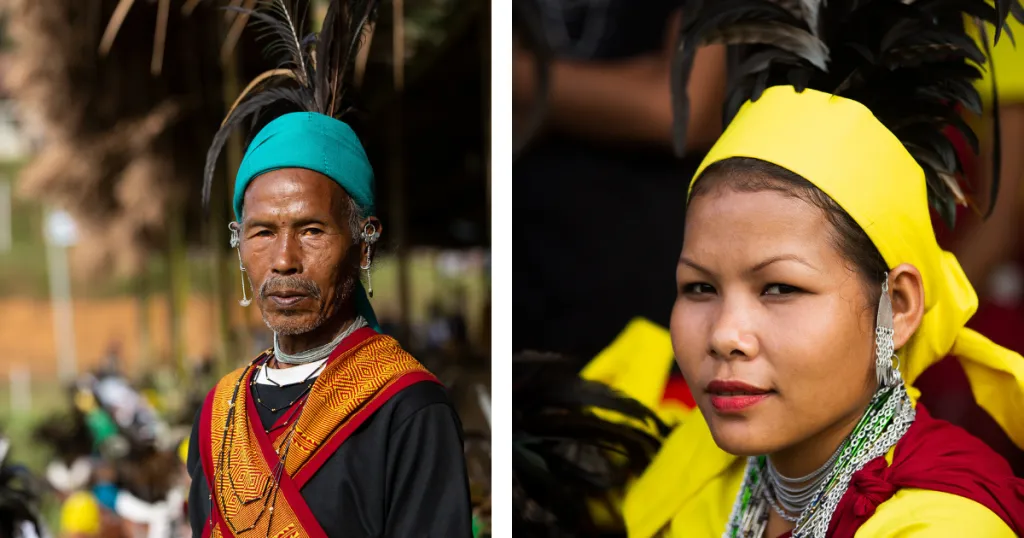
Colour, Craft, and the Spirit of Community
During Wangala, the festival grounds come alive in shades of red, ochre, and gold. The air smells of bamboo smoke and freshly brewed rice beer. Stalls brim with woven textiles, wild honey, fermented pickles, and bright bead jewellery made from forest seeds.
There’s laughter everywhere — from children playing Budu Sala (tug of war) to elders cheering during Ro’ong dea (stone lifting) and Wapong sika (bamboo pole pushing). It’s not just a festival; it’s a village-sized embrace.
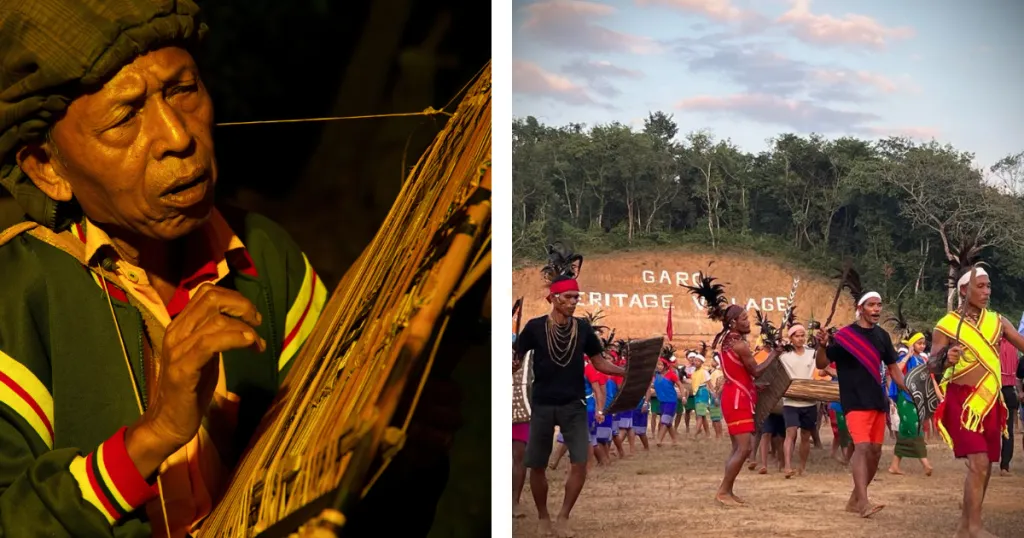
A Visitor’s Story: A Hundred Drums Through New Eyes
In 2023, one of our guests, Kusum Timri — a chef from Bangalore who runs sustainable pop-ups across the city — travelled with us to experience the Festival of 100 Drums for the first time.
“Garo Hills itself is blessed by nature, so to have a festival dedicated to nature makes perfect sense,” Kusum said with a smile. “It’s such a subtle and powerful celebration. Everything felt so gentle — the music, the dancing, the people.”
She recalled how the festival unfolded under open skies, surrounded by hills and lush greenery. “All the decorations were organic — bamboo, leaves, flowers. It felt earthy and pure, nothing flashy or artificial. The people welcomed us so warmly, and soon we found ourselves dancing with them. It wasn’t about watching — it was about joining in.”
Kusum was especially struck by the women.
“They were amazing — fun, confident, and full of energy. At the after-party, we all shared the local brew, and I couldn’t believe how much they could drink and still hold their own! It felt like one big family — cozy, joyful, and real.”
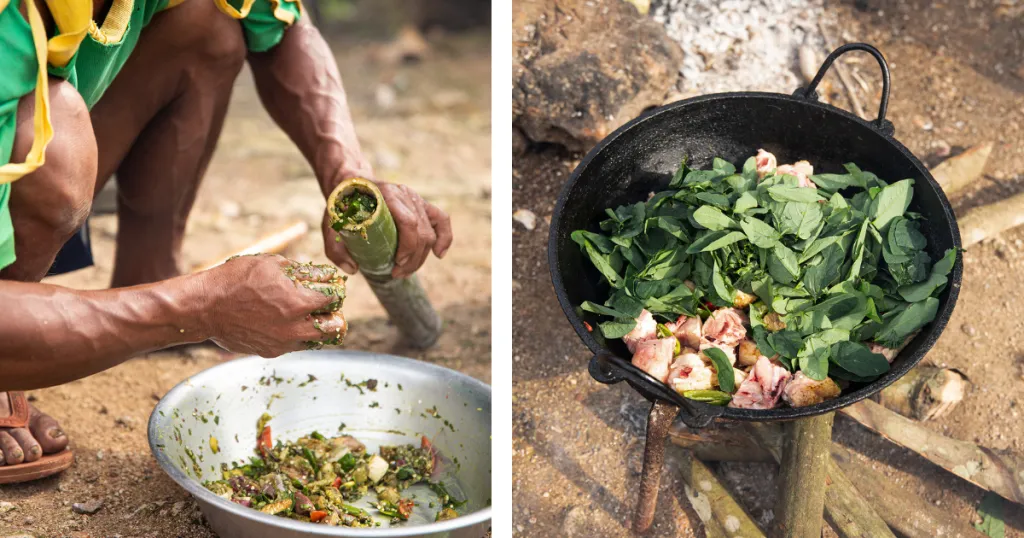
She also loved wandering through the little stalls at the festival grounds. “I found beautiful jewellery made from wild grass, local vegetables, pickles, and spices. Everything was so fresh. But the food — oh, the food — that was the highlight.”
Her eyes lit up as she described it: “The banana blossom curry, the smoked pork cooked in bamboo, and the fresh-water fish done Garo-style — every dish was bursting with flavour. It was a sensory experience, earthy and comforting. After the festival, Julie took us to a local joint, and the people were so eager to share stories about their culture. It truly felt like a window into the simple, beautiful life of Meghalaya.”
Wangala Across Borders
While most prominent in the West Garo Hills of Meghalaya, Wangala also transcends borders. It is celebrated by the Garo people in Bangladesh’s Mymensingh and Netrokona regions, where it’s known as Nabanna — marking the season’s first harvest.
For many Garos, Wangala is not just about tradition but resilience. Even after waves of change following the 19th-century conversions to Christianity, the festival endures as a bridge — between faith and ancestry, between the past and the present.
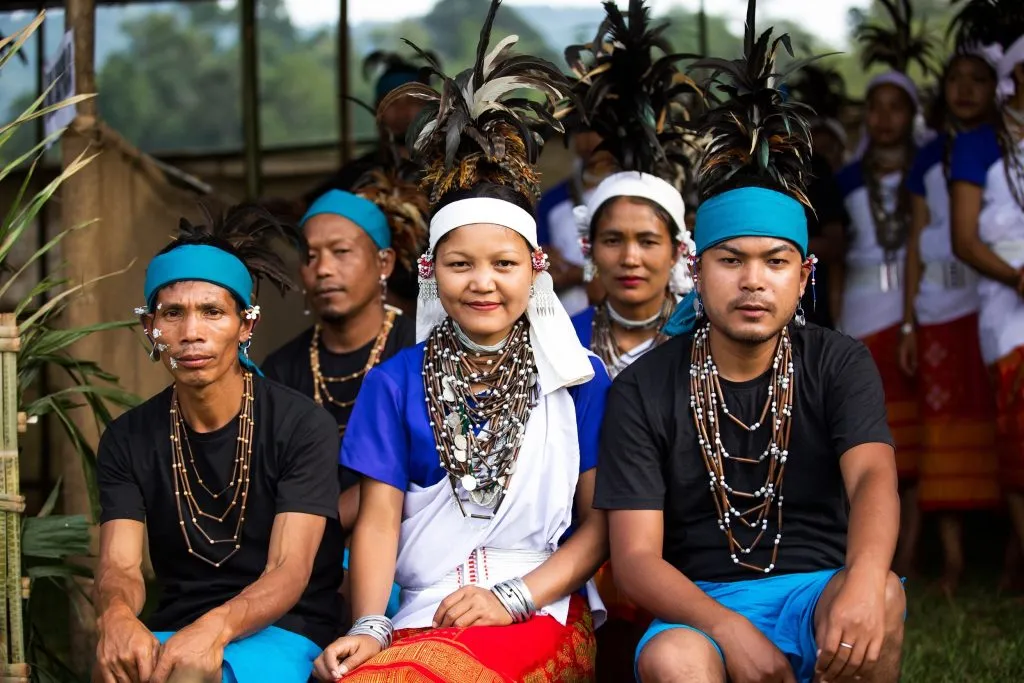
Wangala Today: The Festival of 100 Drums
The modern Hundred Drums Wangala Festival, first held in 1976 at Asanang near Tura, has grown into a vibrant cultural showcase supported by the Meghalaya Tourism Department. Dance troupes from across the Garo Hills, Karbi Anglong, Nagaland, and Bangladesh gather here each year, turning the hills into a living stage of tradition.
Beyond celebration, Wangala today stands as an act of preservation — a way for young Garos to reconnect with their roots and for visitors to witness the living rhythm of North East India’s indigenous culture.
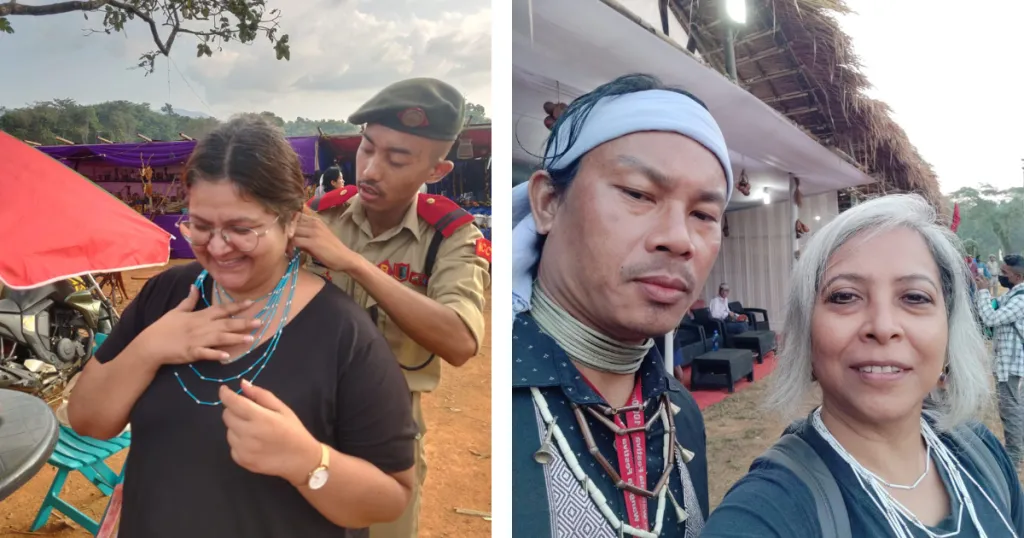
When and Where to Experience Wangala
The festival is held every year around the second week of November, with the grandest celebrations at Asanang, about 18 km from Tura in West Garo Hills.
Getting there:
- Nearest airport: Guwahati or Shillong
- From Guwahati: Around 4–5 hours by road to Tura
- Local transport connects Tura to Asanang
Plan your trip around this time to experience the Garo Hills at their most alive — when the fields are golden, the air is crisp, and the drums echo through the valleys.
In the rhythmic beats of Wangala’s hundred drums lies a story of gratitude and belonging. It’s more than a harvest festival — it’s a heartbeat, echoing through generations, reminding us that celebration can be gentle yet powerful, simple yet profound.
For travellers like Kusum, and for anyone drawn to the authenticity of the North East, Wangala is not just an event — it’s an experience that stays with you long after the last drumbeat fades.
